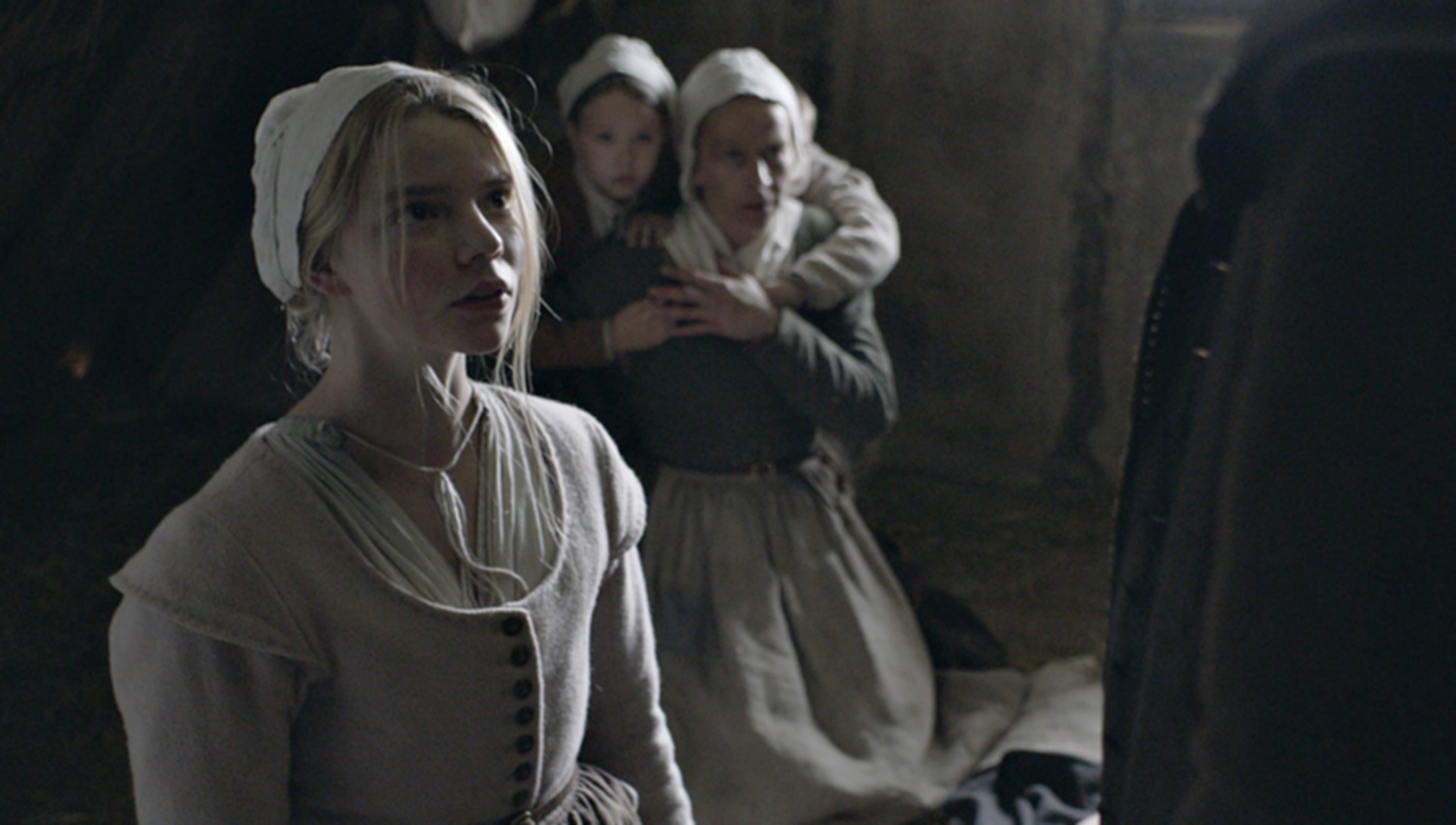There is a big difference between a “scary movie” and a “horror film”, one seeks an instant physical reaction from the viewer, the other a prolonged mental reverberation. “The Witch” is not a scary movie, or at least that isn’t the filmmaker’s purpose. Debuting at The Sundance Film Festival in 2015 with tremendous praise, first-time director Robert Eggers and eventual distribution studio A24 carefully marketed for the film, further pushing expectations, drawing interest from those not usually keen on the horror genre. Here is the thing, “The Witch” isn’t won’t appeal to those who like movies like “Paranormal Activity”, “Insidious” or “Texas Chainsaw Massacre” (recycled mainstream franchises). “The Witch” is a unique independent film that wholly focuses on religious fanaticism and fear of the unknown facing settlers of the early 1600’s.
Banished from the local commonwealth for religious disagreement, in a very public manner. William (Ineson) and his family of six struggle with the adjustment to life in early America. Wife Katherine (Dickie) and their children choose a spot by the woods edge, far from town, to build their home and raise a farm. William and Katherine welcome their fifth child Samuel into the family, and with more mouths to feed than crops, they worry about survival and what they have done to anger God. Eldest Thomasin is playing with infant Samuel by the woods when the baby disappears, tearing the already distraught family into further despair. The young twins play with the family goat, Black Phillip, and tell Thomasin he speaks to them in the barn. The family becomes increasingly tormented by their own faith and a dark presence.
Eggers, unlike many filmmakers dealing with the horror genre, understand that less is more and the viewers imagination is always more horrific than what might appear on screen.
What I love about “The Witch” is how it will infuriate the traditional horror fan, mostly because they will look at the trailer, poster or title and receive something completely different when they sit in the theater. Eggers script and the disturbing images we almost see on screen are restrained in a way to focus on understanding what life might have been like during the time period. He also choses to explore how this families religious faith begins to infect their lifestyle and paranoia. There is an undercurrent of repressed sexual curiosity seen within many of the characters. Eggers suggests this as eldest son Caleb (Scrimshaw) steals glances at his developing sister, the father cutting wood shirtless or the mother breastfeeding in open view of the children.
The more questions “The Witch” raises (and never answers) the more unsettling and disturbing it gets. Eggers suggests that if an isolated family living in New England in 1630 can conjure up such nightmares within (whether there is actually something in the woods or the goat tempting them or not), imagine applying this paranoia on a larger level and you get The Salem Witch trials which occur 62 years following the events of this story. “The Witch”, even the dialogue, is based on documented folklore and literature from the time period. The performances, cinematography and especially the editing are first rate for a directorial debut. Eggers, unlike many filmmakers dealing with the horror genre, understand that less is more and the viewers imagination is always more horrific than what might appear on screen. It’s the brief moments where he abandons that notion, including the ending that damages his overall vision. The greatest thing “The Witch” gives the viewer is afterthought, it’s the kind of story underneath the horror that we don’t see often enough.
Final Thought
Uninterested in scaring the viewer on the surface, just horrifying them internally.

